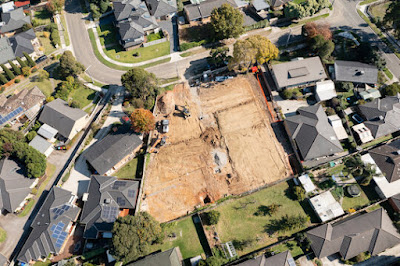Why Aggregate Supply Matters-With Tigers Aggregate Supply
Auckland's economy is booming and the city is experiencing strong growth. This is putting pressure on the city's infrastructure and resources. The city is facing an acute shortage of aggregate (gravel, sand, and crushed stone), which is used in construction. The price of aggregate has been rising steadily and is now at an all-time high. The shortage has led to a slowdown in construction activity and has caused hardship for many businesses. Auckland has a high demand for quality aggregate supply and Tiger's Equipment can provide this demand. We have a team of skilled drivers who can deliver the aggregate Auckland-wide. Our fleet of tipper trucks ensures that we can meet the needs of our customers.
We pride ourselves on being able to supply and deliver quality aggregate promptly. Our drivers are experienced and know how to get the job done efficiently. We understand that time is of the essence when it comes to construction projects, so we make sure that our drivers can get the job done quickly and without delay.
If you need quality aggregate, then look no further than Tiger's Equipment. We're the leading supplier of aggregate in Auckland and we're ready to meet your needs. Contact us today to learn more about what we can do for you.
Explains what Aggregate Supply is and Why it Matters
Aggregate supply is the total amount of goods and services that businesses in an economy are willing and able to sell at a given price level. It is one-half of the aggregate market, the other half is aggregate demand.
Why does aggregate supply matter? Because it directly affects inflation and economic growth. When aggregate supply is low, inflationary pressures increase, leading to higher prices for goods and services. This can cause economic growth to slow as businesses cut back on production due to high costs.
Auckland's economy is currently facing a shortage of aggregate supply, which is putting upward pressure on prices. This is causing some businesses to struggle and has led to concerns about the city's future economic prospects.
The Components of Aggregate Supply: Describes the different components of aggregate supply
There are four components of aggregate supply: labor, capital, land, and entrepreneurship. Labor is the human effort that goes into producing goods and services. Capital refers to the machinery, buildings, and other equipment used in production. Land includes all of the natural resources used in production. Entrepreneurship refers to the risk-taking and innovation that are necessary for economic growth.
Aggregate supply is the total amount of goods and services that firms are willing to produce at a given price level. The aggregate supply curve shows the relationship between the price level and the quantity of output that firms are willing to supply. The aggregate supply curve is downward-sloping, which means that as prices increase, firms are willing to supply less output.
The four components of aggregate supply interact to determine the quantity of output that firms are willing to produce at any given price level.
The Relationship Between Aggregate Supply and Economic Activity
The Relationship Between Aggregate Supply and Economic Activity
In any economy, the level of aggregate supply and demand (AS&D) determines the level of economic activity. When AS&D is in balance, the economy is said to be at full employment. If AS>AD, then there is an excess of production (or "supply") over demand, and businesses will respond by lowering prices to try to spur demand. On the other hand, if AD>AS, then there is excess demand, and businesses will raise prices to try to keep up with demand. Thus, the level of aggregate supply and demand has a direct impact on economic activity.
In recent years, there has been a great deal of debate about the relationship between aggregate supply and economic activity.
Explains How Aggregate Supply Affects Economic Activity
Aggregate supply is the total amount of goods and services produced in an economy at a given price level in a given period. It is the relationship between the number of goods and services produced and the price level. The aggregate supply curve shows the number of goods and services that businesses are willing and able to produce at different price levels.
The aggregate supply curve slopes upward because as prices rise, businesses are willing and able to produce more goods and services. The slope of the curve reflects the law of diminishing returns, which states that as businesses increase production, they will eventually reach a point where they can no longer produce more without incurring additional costs.
The position of the aggregate supply curve affects economic activity in two ways. First, it determines the prices of goods and services in the economy.
The Importance of Aggregate Supply in the Business Cycle
In any market-based economy, there is a constant ebb and flow of aggregate supply and demand. However, what is often not realized is the important role that aggregate supply plays in the business cycle.
Aggregate supply is defined as the total output of goods and services produced in an economy over a given period. It is one of the key drivers of economic growth. When aggregate supply increases, it leads to lower prices and higher wages, which in turn spur consumption and investment. This creates a virtuous cycle of economic growth.
Conversely, when aggregate supply decreases, it leads to higher prices and lower wages, which reduce consumption and investment. This creates a vicious cycle of economic decline.
Thus, it is clear that aggregate supply plays a crucial role in determining the direction of the business cycle.
Discusses the Role of Aggregate Supply in the Business Cycle
In economics, aggregate supply is the total supply of goods and services that firms in an economy plan on selling during a specific period. It is often represented as a graph with quantity supplied on the y-axis and time on the x-axis. The aggregate supply curve shows the relationship between the price level and the quantity of output that firms are willing to sell. The three phases of the business cycle are expansion, peak, and recession. Expansion is when economic growth is positive and unemployment is low. During a peak, economic growth slows and unemployment begins to rise. A recession is when economic growth turns negative and unemployment rises significantly. The role of aggregate supply in the business cycle is to help explain how economies grow and contract over time. When aggregate demand increases, so do aggregate supply. This results in economic growth and higher prices. When aggregate demand decreases, so do aggregate supply.
Conclusion: Summarizes the Importance of Aggregate Supply
In conclusion, aggregate supply matters because it affects the economy in several ways. It determines the number of goods and services that businesses can produce, which in turn affects employment and inflation. Additionally, changes in aggregate supply can lead to real-wage changes and economic growth. Thus, policymakers need to understand how aggregate supply works to make sound economic decisions. In conclusion, the aggregate supply of tigers equipment is important because it ensures that the Tigers have the resources they need to compete. It also allows the team to manage their finances and keep their fan base happy.




Comments
Post a Comment